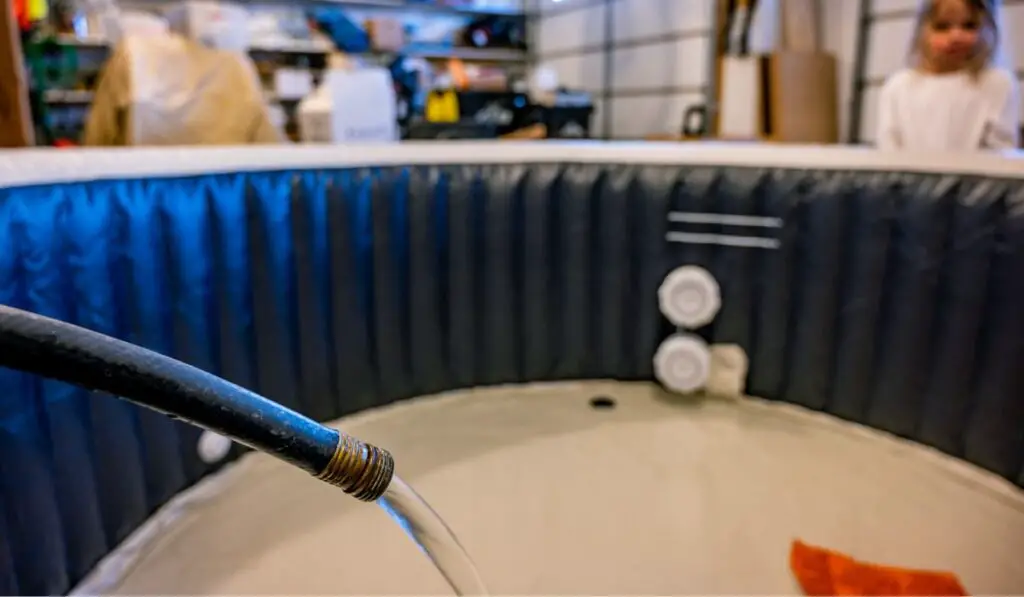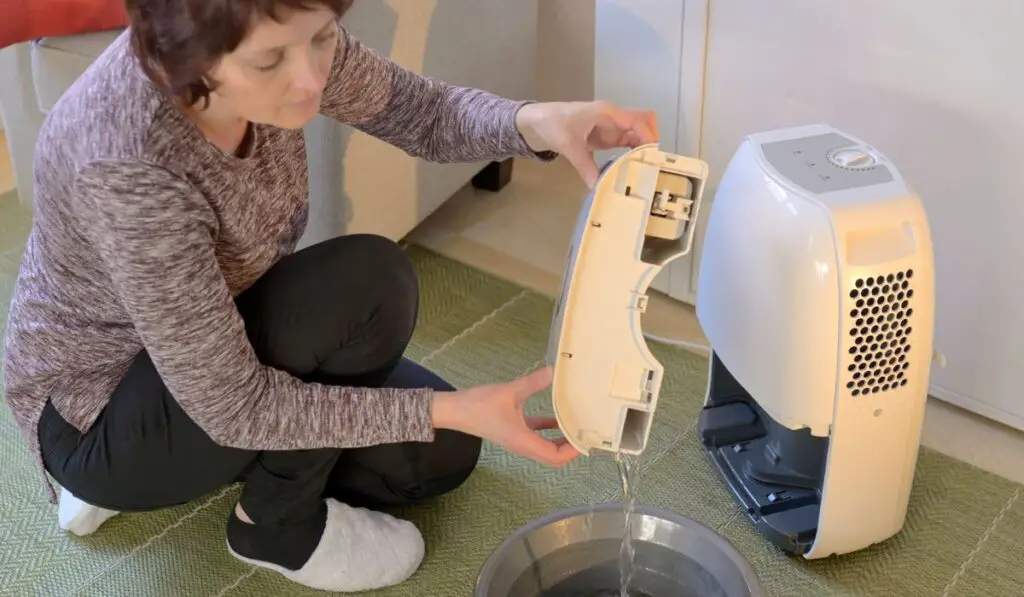Inflatable hot tubs are great to own, as they are portable, inexpensive, and easy to set up. Yet what happens when the weather gets too cold to use it? One of the drawbacks of an inflatable hot tub is the requirement for the ambient temperature to remain above 4 degrees Celsius. A solution for this problem and the added benefit of privacy is to place the hot tub in your garage.
Putting an inflatable hot tub in your garage is doable, with a few things to consider. Make sure there are no oil spills on the floor, and there is enough insulation of the space for your purposes. Consider a fan and dehumidifier to keep the air dry and minimize mold risk.
An inflatable hot tub is great for its portability, and with that comes its ability to be placed conveniently as temperatures outside change. The garage is a perfect location for a hot tub that can offer warmer temperatures and increased privacy. However, when placing your hot tub in the garage, like in any area, you want to ensure it can be adequately contained without creating issues for the equipment, the space or compromising people’s safety.
Can You Put an Inflatable Hot Tub in a Garage?

One of the many benefits of having an inflatable hot tub is its portability and ability to be used in pretty much any location that offers a flat surface.
Having a tub in your garage is simple and can provide many benefits, such as privacy and protection from the elements.
However, a few things need to be considered before setting up your inflatable hot tub to ensure the safety of the people and the equipment involved.
What to Keep in Mind Before Putting a Hot Tub in Your Garage
Size
Since space is limited in many garages, it’s essential to consider the size of your inflatable hot tub before setting it up. Some apparent dimensions to consider are the hot tub’s outer diameter and ensuring enough space on every side to access the hot tub and safely get out.
However, most people fail to consider the interior diameter of the hot tub. In other words, the usable space.
This particular dimension is essential because many inflatable hot tubs have extra thick walls to give enough structural support for people to get in and out of. However, these thick walls also occupy the hot tub’s usable space.
A good rule of thumb for an inflatable hot tub is to look for a feature called drop-stitch construction. This stitching makes the walls quite thinner than a regular inflatable hot tub wall, giving more space to sit and enjoy your hot tub while still holding up like its thicker counterparts.
You’ll get more usable space without needing to increase the outer diameter, having it more likely to fit in your garage.
Voltage
Most inflatable hot tubs have a plug-and-play type of electrical model. They require 110V to run and can be plugged into an outlet. The downside of this smaller voltage is the increased time it takes for the hot tub to heat up.
However, putting a hot tub in the garage tends to be favorable as you don’t need to hard wire your hot tub into your electrical system to run.
Insulation
One thing to consider is the insulation of your garage. Most garage floors are concrete, which gives a solid and flat surface for your hot tub to sit on.
However, concrete is cold, and even though there is some insulation around your hot tub, that cold concrete will sap the heat. This makes it more challenging to keep up to temperature, but it will also require more power and time to keep it at the same temperature.
Garages also lack the same insulation as houses, meaning their temperatures dip quite a bit in winter. And inflatable hot tubs can only be used when the ambient temperature is above 4 or 5 degrees Celsius.
So, keep in mind how cold your garage gets in the winter because it might not be able to hold the heat for very long.
An excellent way to combat this issue is to purchase a space heater to keep the temperature in the garage above the minimum requirements to prevent any damage to your hot tub.
Oil Spillage
Another issue with the floor is that many garages contain oil spills from cars or other vehicles being parked or worked on within the space. In addition, the oil will damage the vinyl of your hot tub by eating away at the plasticizer over time.
This can cause the vinyl to become brittle and eventually split, degrading the inflatable hot tub faster than its expected life span. So make sure, when finding a place in your garage for your hot tub, it is oil-free.
Mildew and Mold
The most popular temperature for a hot tub is between 100 degrees Fahrenheit and 102 degrees Fahrenheit, creating warm and moist air. Unfortunately, between organic material, which is your drywall, moisture, and heat, this becomes a breeding ground for mold and mildew.
It can quickly become rampant if specific measures aren’t taken to eliminate its growth possibilities.
Proper Ventilation

To combat mold and mildew, you want to ensure proper ventilation in the garage. This will let out excess steam and reduce the heavy chlorine smell, lessening any respiratory irritation it might cause.
A simple and inexpensive window fan can help achieve this.
However, you might want to invest in an appropriately sized exhaust fan that can be hooked up to a moisture-sensing humidistat switch if you plan to keep your hot tub in your garage for an extended period.
Another way to combat the humidity and moisture is to purchase a dehumidifier (on Amazon). They help take the moisture out of the air, and this, coupled with a fan, can minimize, if not eliminate, mold and mildew hazards.

Этот бот поможет получить информацию о любом человеке .
Достаточно ввести имя, фамилию , чтобы получить сведения .
Система анализирует открытые источники и цифровые следы.
тг бот глаз бога бесплатно
Результаты формируются в реальном времени с фильтрацией мусора.
Идеально подходит для анализа профилей перед сотрудничеством .
Анонимность и точность данных — гарантированы.